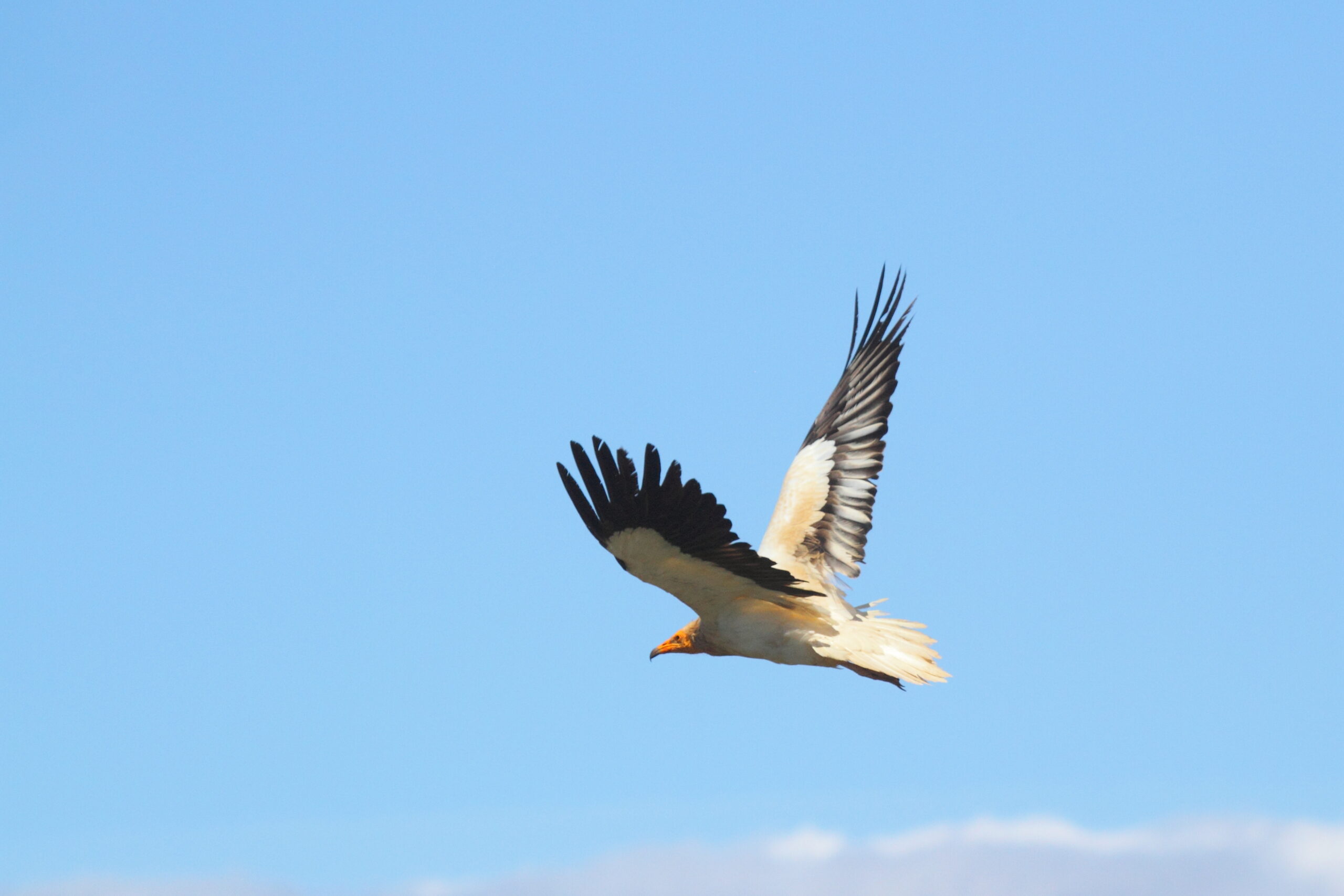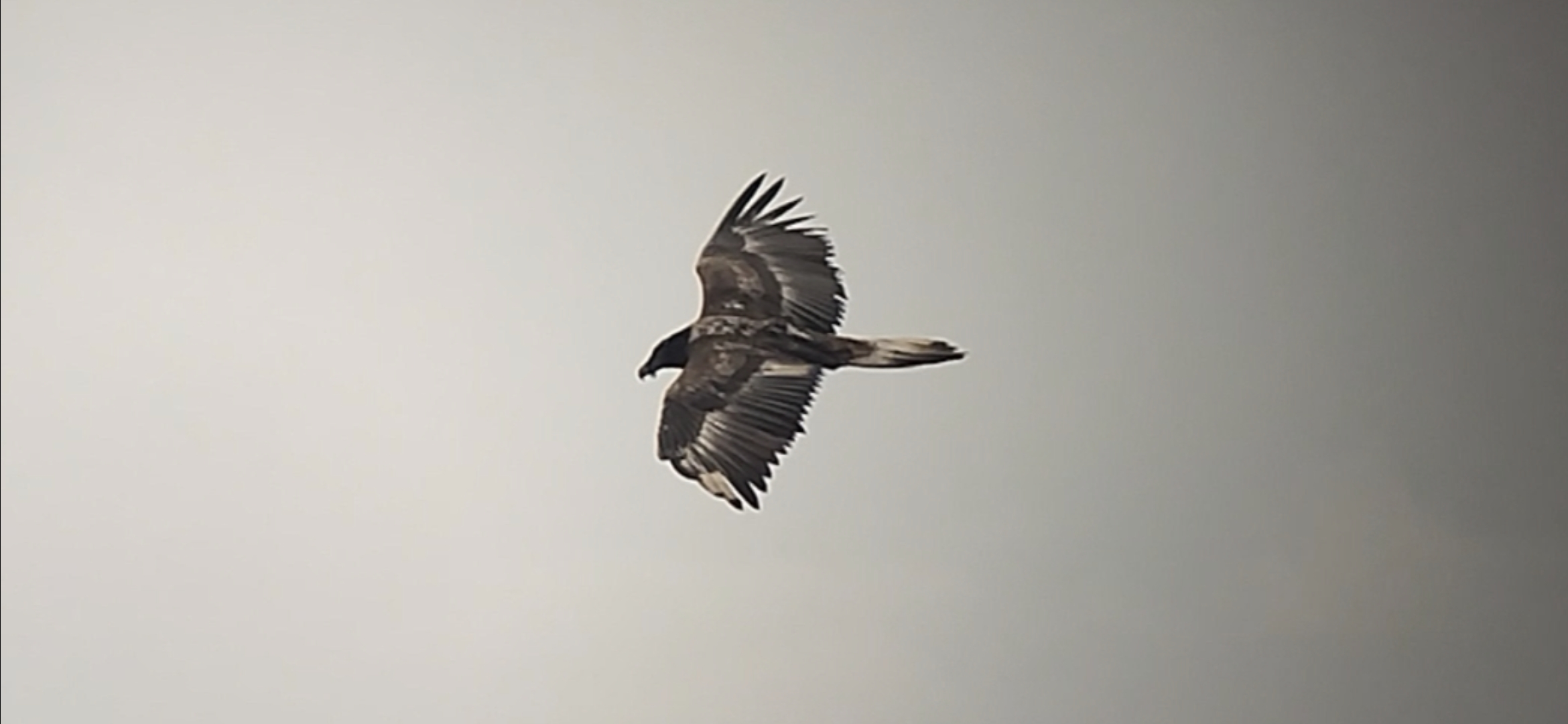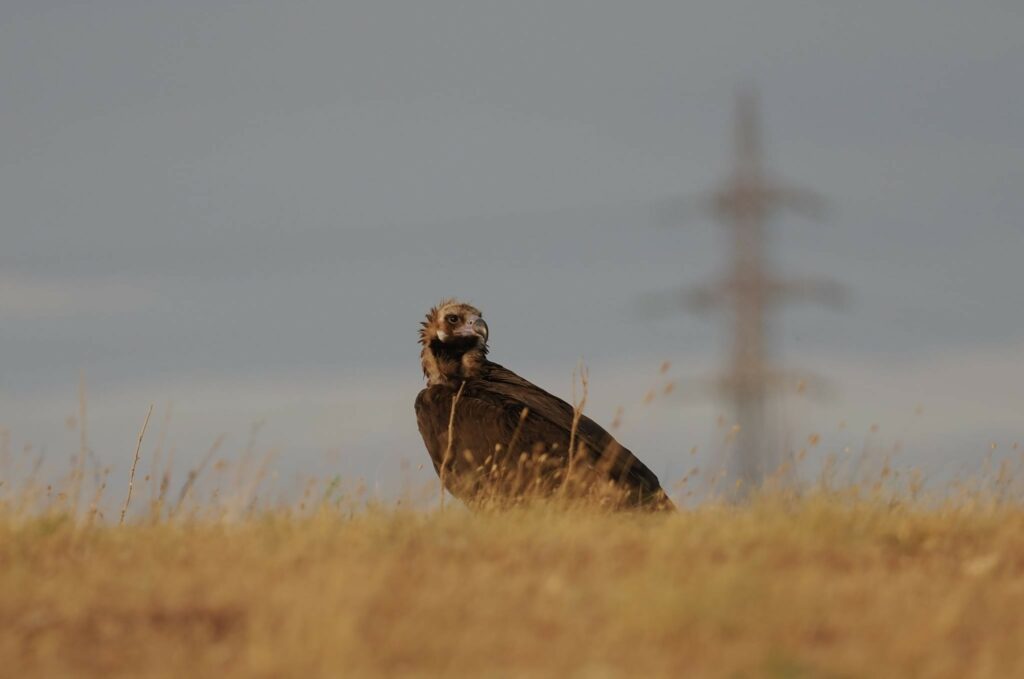
Over the last couple of weeks we here at the Vulture Conservation Foundation have received several worrying reports of raptor deaths, including vultures, caused by electrocution. As was highlighted in the Vulture Multi-species Action Plan – a global blue-print for vulture conservation, electrocution with power lines is an often overlooked significant threat to vultures.
Recent casualties
An Egyptian vulture found by the Royal Society for the Conservation of Nature (RSCN) on the outskirts of the municipality of Mann in Jordan below a powerline is just one of a number of recent vultures electrocuted.
Jordan is in the middle of one of the most important flyways for migratory birds as they make their way to their wintering grounds and it was during a visit to inspect the activities carried out by electricity companies to make high-risk pylons safe that the team from the RSCN made the discovery of the dead vulture in April this year.

It was also during an inspection of a powerline that a delegation from the Ministry of Agriculture, Environment and Rural Development of the Junta de Castilla-La Mancha in Spain made an even more distressing discovery back in September. On a single stretch they found over 30 dead raptors including golden eagle, eagle owl, kite and endangered Imperial eagle, near the town of Albacete, with some remains more than a year old.
Julia Giménez of the Albacete Society of Ornithology (SAO) explains that the specimens have appeared inside a farm that is usually fenced and can not be accessed.
“Unfortunately, in Albacete we register about 200 bird electrocutions a year” she explains. “In 2018 they have already recorded the death for that reason of three imperial eagles, a Bonell’s eagle, three golden eagles; 25 eagle owls and 12 booted and short-toed eagles, among others.“

Another case involved a young Ruppell’s vulture, an african species increasingly seen in Iberia, that had been rescued and rehabilitated in the Centro de Recuperación de Especies Amenazadas in Andalucia, and that has been released last month (October 2018) at Sierra Pelada near the town of Cortegana, Huelva. However, this young bird became the latest victim of this overlooked threat. Just 10 days after release the GPS transmitter that was attached to the bird ceased sending a signal back and the team from Estación Biológica de Doñana went to investigate. The bird was found dead near a poorly insulated powerline close to a rubbish dump where the bird had been feeding. It must be noted that this pylon had devices to try to prevent birds from perching, but they obviously did not deter the Ruppell´s from doing so.
These are just some of the cases of deaths by electrocution that we’ve heard about, tragically many more deaths go unreported, as in Spain alone only 20 percent of mortalities caused by electrocution are recorded.
The threat of electrocution
The threat of electrocution occurs when vultures perch on poorly insulated medium-tension electricity pylons, particularly those that have a design which make it easier for the bird to touch the cables and the pylon at the same time.
Making flyways safe
This threat is relatively easy and cheap to mitigate, as the insulation of cables in high-risk poles is relatively easy and inexpensive. In the long term, selecting pole designs that are less dangerous, or even burrowing lines in high-biodiversity areas seem better options. There are many projects, including our own LIFE-funded projects such as LIFE Rupis, Vultures Back to LIFE, LIFE GYPHELP and LIFE Re-Vultures, that are working to tackle the threat of electrocution with electricity infrastructure. The MAVA Foundation is also funding projects across the eastern Mediterranean flyway to minimise the threat of electrocution.

In Jordan where the Egyptian vulture was found the RSCN has been working to develop an anti-electrocution plan that will reduce the mortality of migratory birds which include identifying the highest risk pylons and powerlines and safeguarding them by insulating wires and planting spikes or balls across the powerlines that will discourage perching.
Tariq Qaneer from RSCN explains, “This new mitigation plan will hopefully prevent more deaths in Maan municipality, as the constant need for energy has made Maan dangerous for migratory birds and they need protection in order to survive and reach their destination”.
The RSCN aim to create a safe flyway through projects such as the Migratory Soaring Birds Project, funded by the Global Environment Facility (GEF), executed by the United Nations Development Program (UNDP), and implemented by BirdLife International.
As well as mitigation activities like the ones being carried out by RSCN, authorities across many parts of Europe have also started to pass legislation to ensure electricity companies make their infrastructure safe. In May this year the High Court of Justice of Castilla-La Mancha ratified a penalty of €100,001 to Iberdrola Distribución Eléctrica for a “very serious infraction” for the electrocution of an Iberian imperial eagle on one of its poles in the municipality of La Herrera (Albacete). This was the first final judgment in Spain against an electric company for the electrocution of birds.
In the recent case in Albacete the Junta de Castilla-La Mancha is currently investigating. Should these deaths have been caused by electrocution the authorities have stated that disciplinary action will be taken.
Improving our understanding of deaths caused by collision and electrocution
In order to better understand the risks posed by electrocution and collision with electricity infrastructure we urge all our partners to follow as rigorous protocol for suspected deaths from electrocution as for poisoning (strict chain of custody, necropsy, analyses) to ensure deaths are recorded correctly and can be used as evidence.
Even though these deaths of vultures and other raptors are tragic, it’s heartening to see from some of these cases local government working collaboratively with electricity companies and consulting wildlife organisation to make safe some of the highest risk pylons and reduce the number of deaths caused by electrocution.
For more information we have compiled resources from projects across Europe and beyond that highlight the work being carried out to make electricity infrastructure safe for vultures on a recent blog post.



